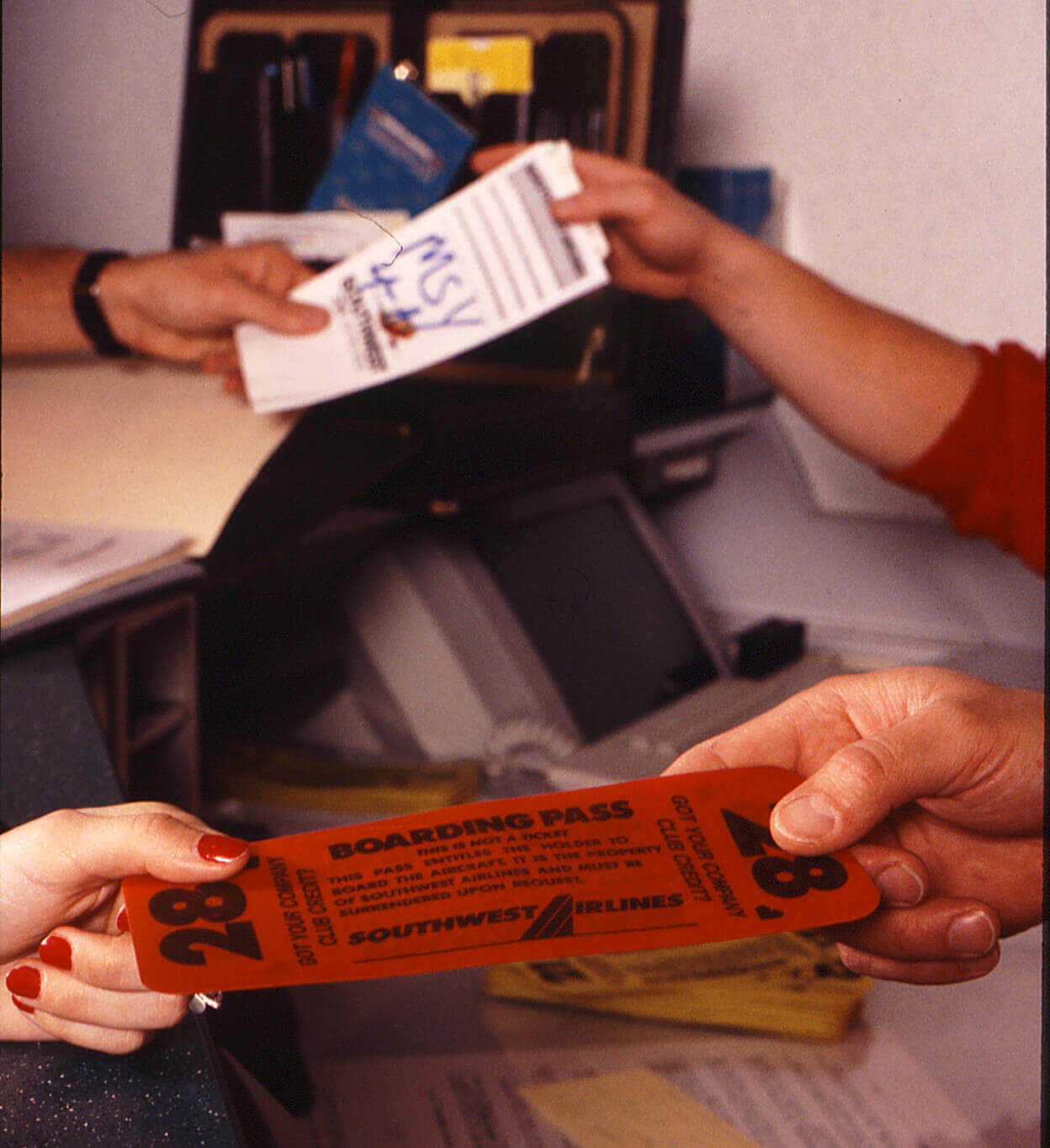
Tickets, Please: Southwest in the Internet Age
In the spring of 1994, three of Southwest’s largest competitors—Delta, United, and Continental—launched a coordinated surprise attack on their rival, hoping to muscle it out of the skies.
With Southwest enjoying a major growth spurt, its competitors were increasingly desperate. No matter what new initiatives they introduced, Southwest continued to win over their Customers at an enviable clip.
It was time, the rivals decided, to try to exploit the only potential weakness in Southwest’s otherwise impenetrable armor. At the time, approximately 55 percent of Southwest business flowed through four powerful computer reservation systems that travel agents relied on to book and print tickets.
Unfortunately, Southwest rivals owned three of those four systems: Apollo, Worldspan, and System One. This created a unique chokepoint that could have derailed Southwest.
In April 1994, notifications from Southwest competitors began rolling in, one by one. They read like ransom notes, offering Southwest two choices: Pay exorbitant fees for every round trip ticket booked in these systems, or be kicked off the systems altogether by early May.
As far as Leadership was concerned, neither option was acceptable. If Southwest paid the extra fees, it would no longer be able to maintain its low-fare price structure. If it refused to pay, it would be the airline equivalent of trying to sell products in a grocery store without any shelf space.
Although the Southwest Legal Department believed these demands could have been litigated in court, doing so would have taken years. By that time, Southwest might be wiped off the map completely. A third option was obviously needed—and fast.
A diverse cross section of Southwest Employees quickly gathered to hammer out potential ideas. In classic Southwest style, they held firm to a principle Founder Herb Kelleher embraced, the KISS principle: Keep It Simple, Stupid. Everyone agreed that the best possible approach would be to eliminate paper tickets, which Customers were constantly losing or accidentally running through the wash. But in the short term, Southwest needed a way to link travel agents directly to its own network.
After a number of outside-the-box brainstorming sessions, the Team realized that the best solution was to start thinking inside the box. If Southwest could create a plug-and-play package that gave travel agents everything they needed to book and print Southwest tickets, Southwest might be able to leapfrog this logjam.
Southwest Airlines Travel (SWAT) was designed and packaged in less than a week and quickly shipped to large-volume travel agents. Each package contained a personal computer, a modem, and ticket printers, so that travel agents had everything they needed to log in to the Southwest network, book a seat, and print tickets.
The Southwest reservation system-in-a-box was so revolutionary, in fact, that it attracted attention from The New York Times and The Washington Post. Meanwhile, Southwest took care of smaller travel agencies by printing tickets at Headquarters and hiring couriers, at its own expense, to deliver them via same-day or overnight delivery.
Despite this ingenious workaround, Southwest remained committed to developing a ticketless system. It was becoming clear to Company Leadership that the winds of change were accelerating. This was especially true regarding a big game-changer: the internet.
Initially, Southwest considered creating an agreement with tech companies to display its schedules and fares on their sites. But it seemed counterintuitive to yield control of its reservation system when Southwest might be able to build and operate a website of its own.
A critical step forward occurred in January 1995, when Southwest became the first major airline to offer its Customers coast-to-coast Ticketless Travel. Travel agents could provide Customers with a confirmation number, which could be used to print a boarding pass at the airport.
The ripple effects of this innovation polished the Company’s already sterling Customer Service reputation. Using just the first few letters of a Customer’s last name, Southwest Customer Service Agents could quickly handle check-in and begin the baggage check-in process—all of which reduced error rates to less than one percent.
The e-ticket option became so popular that Southwest welcomed its one millionth Ticketless Customer just a few months later, in March 1995.
That same month, Southwest became the first major airline to launch its own website: iflyswa.com. And just a short year later, on April 30, 1996, Southwest made good on its original goal of launching an online portal that allowed Customers to buy tickets from home or at work via their personal computer.

Southwest received the Computerworld Smithsonian Award for travel innovations in June 1996.
